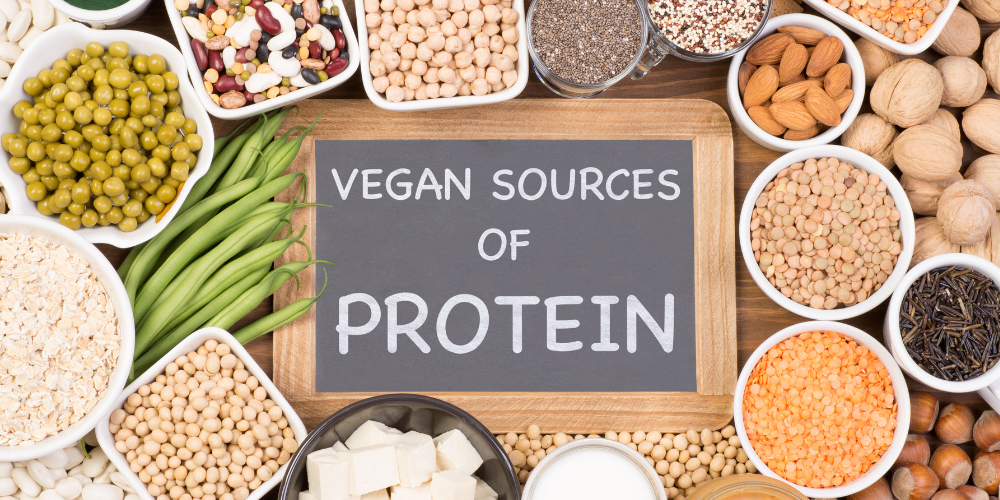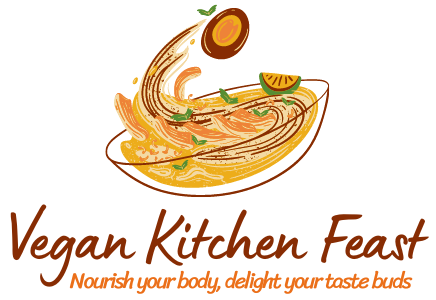
I’m going to kick things off by discussing why protein is a big deal, especially if you’re following a vegan lifestyle. See, protein isn’t just about building muscles – it’s a crucial building block for just about every part of your body, from your bones to your skin.
Vegans, you’ve probably been asked, ‘Where do you get your protein?’ more times than you can count. It’s a valid concern because you aren’t reaching for the typical go-to sources like meat, eggs, or dairy. But don’t worry too much about it – there are plenty of plant-based protein powerhouses out there.
You might be wondering about how much protein you actually need. Well, it varies. An average sedentary man might need about 56 grams per day, while a woman might need about 46 grams. But this is going to change if you’re more active or if you have specific health goals.
And if you’re thinking that plant-based protein isn’t as good as animal protein, I’ve got news for you: numerous studies have shown that with the right selection, you can meet all of your dietary needs with a vegan diet. Sure, there’s a bit of a learning curve, but that’s what I’m here to help you with.
Top Whole Food Plant-Based Protein Sources
When you’re following a vegan diet, getting enough protein is a big topic of discussion. Believe it or not, it’s entirely possible to meet your protein needs without animal products. Let’s explore some plant-based heroes that pack a serious protein punch.
Lentils might just be one of the most nutritious foods out there. A single cup of cooked lentils provides about 18 grams of protein. But that’s not all; you’ll also find iron, fiber, and folate in these tiny powerhouses. They’re incredibly versatile, too. You can throw them into salads, soups, or whip up a mean lentil loaf.
Next up, we’ve got chickpeas, clocking in at about 15 grams of protein per cup when cooked. Roast them for a crunchy snack, mash them into falafel, or blend them into hummus. Chickpeas are amazingly adaptable and also rich in fiber, maintaining a healthy digestive tract.
Beans, beans, they’re good for your heart, and the more you eat, the stronger you’ll feel! Black beans, kidney beans, and navy beans are just a few varieties that offer a protein boost to your meals. Depending on the type, beans can offer approximately 15 grams of protein per cup, along with essential nutrients like potassium.
If you haven’t tried nutritional yeast yet, you’re missing out. With its cheesy flavor, it’s a lifesaver for vegan pizzas, pastas, and even popcorn. A couple of tablespoons can provide up to 9 grams of protein and a wealth of B vitamins, which are crucial for energy metabolism.
Chia seeds and flaxseeds don’t just give you protein; they also supply omega-3 fatty acids. These little seeds are great for throwing into smoothies, oatmeal, or baking mixes for a nutritional boost without much effort. They’re proof that great things come in small packages, offering around 5 grams of protein per ounce.
Innovative Ways to Incorporate More Protein Into Vegan Meals
I’m going to show you how to jazz up your meals with a protein punch that’s completely plant-based. Let’s be real, no one wants to eat a block of tofu every day. Variety is the spice of life, and your vegan meals can be both diverse and protein-rich.
You’re going to find out about starting your day with a high-protein vegan breakfast. Imagine kicking off your morning with a delicious smoothie bowl that’s loaded with spirulina, hemp seeds, and a dollop of almond butter. Or, how about a tofu scramble that looks and tastes like the scrambled eggs you remember, but packed with protein and plant goodness?
Don’t worry too much about lunch and dinner being a protein predicament. Throwing chickpeas into a salad, or beans into a hearty stew can amp up the protein without much fuss. Plus, these ingredients have the added bonus of keeping you full longer.
Tofu and tempeh may sound typical, but I’ll share some tricks to make them anything but boring. A smoky BBQ tempeh sandwich or a crispy tofu stir-fry can be game-changers in your weekly meal rotation.
Now, what about those times you’re in a rush or looking for a snack? That’s where plant-based protein powders come in. A quick shake can be surprisingly satisfying, and they’re great for on-the-go.
Finally, a word on seitan, often nicknamed ‘wheat meat’ for its texture. If you want to impress the skeptics at your table with a high-protein vegan dish, whip up a batch of seitan ribs or seitan ‘chicken’ wings that will make them do a double-take.
Balancing Your Vegan Diet for Optimal Nutrition
I’m here to help you master the balancing act of ensuring your vegan diet is as nourishing as it can be. It’s not just about loading up on protein; it’s also about making sure you’re getting a colorful array of nutrients to support your overall health.
Choosing a variety of foods is key. This isn’t just about taste, it’s about making sure you’re covering all your nutritional bases. Dark leafy greens, whole grains, nuts, seeds, and fruits are all part of the puzzle alongside those protein powerhouses.
In my opinion, it’s crucial to focus on those often-overlooked micronutrients, especially vitamin B12, iron, calcium, and omega-3 fatty acids, which can be less abundant in vegan diets. Fortified foods or supplements can be a big help here, ensuring you don’t miss out on vital nutrients.
It’s smart to think about amino acids too. Plants contain different amino acids, so combining various protein sources is a clever strategy I like to leverage. Think beans and rice, peanut butter on whole wheat bread, or hummus with pita – classic combos that are nutritionally complete.
If you want to take the guesswork out of vegan meal planning, you can always consult a dietitian. They can provide personalized advice tailored to your lifestyle, nutritional needs, and food preferences, to make sure that your diet is giving you everything you need.
